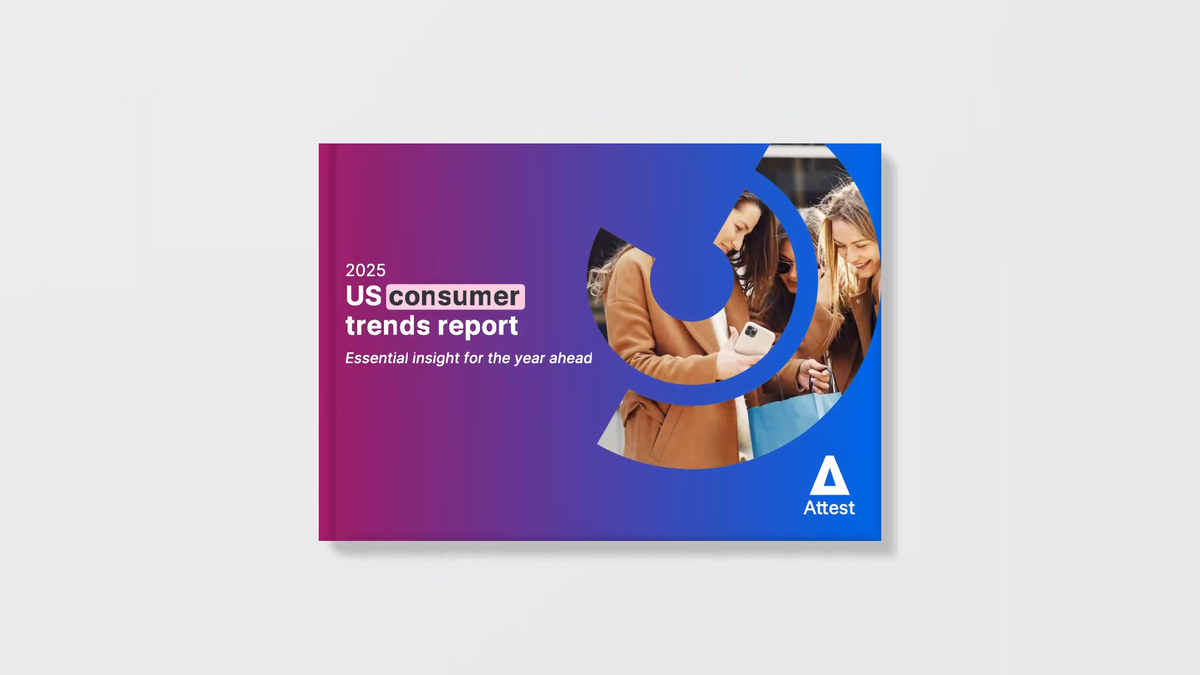Retail Trends: American consumers feeling positive for 2025, yet many not willing to spend freely

Attest, a leading New York-based consumer research platform, today releases new data on the trends that will shape 2025.
The research is found within the fifth annual US Consumer Trends report that tracks sentiment and behaviors for the new year, a survey of 2,000 nationally representative working-age US consumers. Key findings include:
1. Americans feel good about what’s in store in 2025, yet most are not ready to spend
- The data finds that over two-thirds (at 69%) of Americans feel “positive” about what 2025 may bring.
- However, a majority (54%) of consumers say they will be spending cautiously (in contrast to nearly a quarter of respondents who say otherwise). In fact, nearly three-quarters of Americans (74%) say they are more likely to buy a cheaper brand, instead of their favorite brand, in order to save money.
2. While there is a clear divide over who feels financially secure for 2025
- When it comes to financial security, 39% feel insecure, while 37% feel the opposite.
- Yet sentiment is notably more negative among female consumers. Financially, American women believe they are significantly worse off than men. Overall, 45% say they feel financially insecure in comparison to 33% of men. And the level of insecurity that women are experiencing is more extreme, with 22% feeling “very financially insecure” versus 15% of men.
3. This divide also extends to what people want to see from brands in 2025
- Consumer desire for funny brand messaging has fallen -5 percentage points (to 51%) , while interest in educational messaging has increased by +9 percentage points (to 42%). Motivational messaging remains popular, at 49%.
- The data also shows another clear divide though - women are looking for different things from brands than men. In terms of marketing, they’re significantly more likely to want to hear reassuring messaging (41% versus 32% of men), although motivational messaging holds the most appeal for women overall (52%).
- While a sizable minority of consumers don’t want brands to delve into sensitive or political issues (28%), a majority do, with poverty and inequality (37%) being the top issue people want to hear from brands on. This is followed by racism and women’s rights (both at 26%). Notably, there’s been a -6 percentage point decline in desire for brands to take a stance on gun violence (to 22%).
- In particular, female consumers are looking for brands to weigh in on women’s rights (34%). Gen Z women (aged 18-26) feel especially strongly, with 59% wanting action from brands on women’s rights.
4. It’s the economy, stupid - Climate change has taken a backseat to the economic performance
- 49% of consumers agree the economy is more important than the environment and this opinion is held by all demographics, and also bridges the gender divide as men and women are also in agreement on the issue.
- The good news from the data is that this attitude hasn’t had a negative impact on environmentally friendly behaviors. None of the nine behaviors Attest measures for have changed significantly. There’s been a small decline from last year’s data in recycling (59%) accompanied by small increases in using less single-use plastic (33%), buying from environmentally-friendly brands (20%), and buying fewer things in general (36%).
- Surprisingly, Attest also sees an increased willingness to pay for environmentally-friendly products, despite the majority of consumers clearly keeping their finances under tight control, as mentioned above. Last year, 44% of consumers wouldn’t pay anything extra for a green product, but that figure has decreased to 40%. Gen Z are the most likely to pay a premium (73% say they’d pay more), while Boomers are the least likely (50%).
5. Online shopping takes a hit,, while reliance on AI takes off & TikTok engagement falls
- The number of consumers who say they shop “mostly” or “always” online declined markedly by -13 percentage points (to 26%) compared to last year (39%).
- Perhaps surprisingly, this rebound in in-store shopping is being led by Gen Z, following a -15 percentage point decline in habitual online shopping among this demographic. Young shoppers are also less likely to shop on social media than they were a year ago (down from 18.5% to 12.5%). However, Gen Z is the demographic most likely to use an AI search engine; 36.5% use one at least half the time they do a search (compared to 16% of consumers in general). Consumers with an income over $100k also over-index for using AI for search (30% use it “most” or "all” of the time).
- Finally, the data also finds that there have been losses in brand engagement across nearly all of the biggest social platforms among this age group. TikTok has suffered the largest, recording a -17 percentage point decline (to 50.5%). Just over half of Gen Z say they interact with brands on TikTok, which makes it less popular than YouTube (66%) and Instagram (63%). Fellow Gen Z fave, Snapchat has also experienced a -10 percentage point decline and now only achieves brand interaction with 36% of its young audience.




